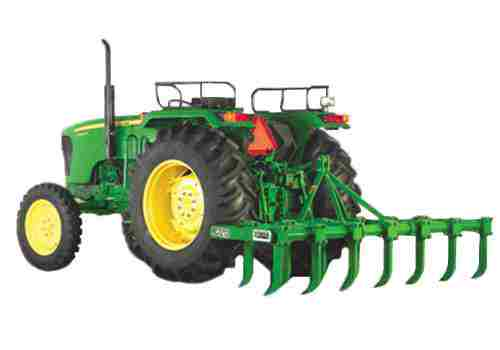Uses of Cultivator in Agriculture: KhetiGaadi

What is a Cultivator?
A cultivator is a farming or gardening implement used to mechanically loosen and prepare soil for planting or cultivating crops. It typically consists of multiple curved or straight tines or blades that penetrate the soil, breaking it up and removing weeds or unwanted vegetation.
Cultivators can be operated manually, pulled by animals, or powered by machinery. They are essential tools in various agricultural practices, such as tilling, weeding, and seedbed preparation. A cultivator in agriculture is an essential tool used for soil preparation, weed control, and promoting optimal plant growth.
Crop Cultivator:
A crop cultivator specifically refers to a type of agricultural implement or machine used to cultivate or till the soil in order to prepare it for planting and growing crops. Crop cultivators come in various forms, including tractor-mounted cultivators, handheld cultivators, or even specialized cultivators designed for specific crops or farming methods.
Tractor Cultivator:
A tractor cultivator is a type of agricultural implement that is attached to a tractor and used for soil cultivation in farming operations. It is specifically designed to be pulled by a tractor and is commonly used for preparing seedbeds, weed control, and incorporating fertilizers into the soil.
Cultivator Use:
Cultivators have several uses in agriculture, including:
-
Soil Preparation: Cultivators are used to break up compacted soil, remove debris, and create a loose, well-aerated seedbed for planting crops.
-
Weed Control: Cultivators help in managing weed growth by uprooting or burying weeds, reducing competition for nutrients, water, and sunlight.
-
Seedbed Preparation: They aid in creating an ideal environment for seeds to germinate by leveling the soil, removing clumps, and incorporating organic matter or fertilizers.
-
Incorporating Amendments: Cultivators can be used to mix soil amendments, such as compost or manure, into the soil, improving its fertility and structure.
-
Cultivation and Aeration: They break up soil crusts and improve soil aeration, facilitating root development and nutrient absorption by crops.
-
Intercropping and Row Maintenance: Cultivators help maintain clear rows and spaces between crops, allowing for efficient intercropping and facilitating access to irrigation and harvest.
-
Pest and Disease Management: In some cases, cultivators can disrupt the life cycle of pests and diseases by disturbing their habitats or breaking up plant residues that may harbour pathogens.
Overall, cultivators play a crucial role in preparing the soil, managing weeds, and creating optimal conditions for successful crop growth and yield in agriculture.
Features of cultivator -
The features of a cultivator can vary depending on the specific model and purpose. However, here are some common features found in cultivators:
-
Blades or Tines: Cultivators have blades or tines that penetrate the soil. These blades can be rigid or flexible, and their design may vary depending on the intended use of the cultivator.
-
Adjustable Depth: Many cultivators have adjustable depth settings, allowing farmers to control how deep the blades or tines penetrate into the soil. This feature is useful for accommodating different soil types and cultivation needs.
-
Width Adjustment: Some cultivators offer width adjustment options, allowing farmers to customize the spacing between the blades or tines. This feature enables flexibility in row spacing or accommodating different crop requirements.
-
Attachment Mechanism: Cultivators have attachment points or hitches for connecting to tractors or other power sources, ensuring a secure and stable connection during operation. These also allow for the connection of various implements such as ploughs, harrows, or seeders, expanding the functionality and versatility of the cultivator.
-
Transport Wheels: Some cultivators have transport wheels that make it easier to move the implement from one location to another, especially when not actively engaged in cultivation.
-
Frame Construction: Cultivators are constructed with durable materials such as steel or cast iron to withstand the demands of soil penetration and other cultivation tasks. The frame is designed to provide stability and support during operation.
-
Power Source Compatibility: Depending on the size and type of cultivator, it can be designed for manual operation, animal-drawn, or powered by tractors or other machinery. The cultivator's features may be tailored to the specific power source it is intended to be used with.
These are just some of the common features found in cultivators. The specific features and design may vary depending on the size, type, and intended use of the cultivator.
Cultivator Price:
The price of cultivators can vary significantly depending on several factors, including the type, size, brand, features, and market conditions. Visit the KhetiGaadi website for more information about Tractor, Tractor Price, Cultivator types, and cultivator prices.
- Art
- Causes
- Crafts
- Dance
- Drinks
- Film
- Fitness
- Food
- Jogos
- Gardening
- Health
- Início
- Literature
- Music
- Networking
- Outro
- Party
- Religion
- Shopping
- Sports
- Theater
- Wellness




